Harsh environments can wreak havoc on motion system components — especially rolling element systems such as linear guides and ball screws. And while protective devices such as rail covers, wipers, and scrapers are widely available for linear guides, protecting ball screws in harsh environments is a bit more tricky.
But despite being more difficult to safeguard from contamination and temperature extremes, there are measures that can help prevent these environmental conditions from severely shortening the life — or even causing failure — of a ball screw assembly.
Materials for harsh environments
When selecting a ball screw for an application that involves liquid contamination such as water, acids, or alkaline cleaning solutions, one of the first things to consider is the material of the components — especially the screw shaft, ball nut, and seals.
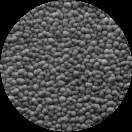
Image credit: Hi-Tec Plating Inc.
Although screw shafts and ball nuts are typically made of steel for high load capacity and rigidity, there are other material options that can help them withstand challenging environments. For example, protective coatings such as thin dense chrome, electroless nickel, or black oxide can be applied to the screw shaft and, in some cases, the ball nut housing. And some manufacturers offer ball screw shafts made of stainless steel, for applications where water or chemicals pose a significant challenge.
It’s important to note that some coatings can flake, or separate, from the base screw material under extreme loads and pressures. And stainless steel screws have reduced load capacities when compared to their steel counterparts. Coatings also add a few microns of thickness to the surface and can affect ball nut preload. It’s always best to consult with the screw manufacturer when deciding on the best material or coating, not only to determine which option will provide the best defense against environmental hazards, but also to determine its effect on screw performance.
Seals protect against solid and liquid contaminants
Seals — located on each end of the ball nut — can prevent both liquid and solid forms of contamination from making their way between the load-bearing balls and the raceway. In addition to keeping contamination out, these seals also serve the important function of keeping lubrication in.

Ball screw manufacturers offer a variety of seal types, from felt or brush-type wipers that protect against solid contaminants, to full-contact seals that perfectly match the profile of the screw raceway and prevent virtually any liquid or solid contamination from entering the ball nut.
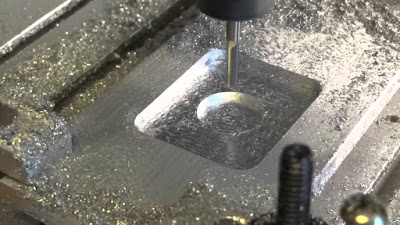
Image credit: Inventables.com
Standard ball nut seals are commonly made of FKM (Viton), but manufacturers offer other materials, such as EPDM, that can withstand temperature extremes and protect against specific chemicals. Keep in mind that seals that make contact with the screw shaft — those that prevent small particles and liquids from entering the ball nut — increase friction and drag torque, which must be accounted for during sizing.
Temperature can also be an environmental hazard
The normal operating temperature for ball screw assemblies depends in part on the type of seals and lubrication used, but generally ranges between 0° C and 80° C. Temperatures higher or lower than these limits, as well as significant temperature fluctuations, can cause thermal expansion of the screw shaft. Case in point, a 1° C rise in temperature can cause the screw shaft to lengthen by 0.012 mm per meter of length. As the screw lengthens, the lead of the screw thread elongates, which reduces the screw’s accuracy.
One method to mitigate the effects of thermal expansion is to mount the screw shaft in tension, with fixed bearings on both ends. This helps to prevent the screw from expanding (or contracting) due to heat (or cold). Forced air cooling of the screw assembly is also a good solution in some applications. A more extreme measure — but one commonly used in applications such as machine tools, where travel accuracy is absolutely critical — is to use a hollow screw shaft with internal cooling to reduce the temperature of the screw material.

But it’s not just the effect of temperature on the screw shaft that needs to be considered. In fact, virtually every part of the screw assembly can be affected by temperature extremes. As mentioned above, materials for seals can be chosen to meet specific temperature requirements. End bearings also have seals with specific temperature ratings, so the permissible operating temperature of the end bearings should be checked as well.
Temperature extremes can also affect the performance of lubrication, since the lubricant’s viscosity (resistance to flow) is determined in part by its temperature. And every lubricant has strict temperature limits to ensure that it doesn’t separate into its components (base oil, thickener, and additives), so it’s important to check the lubricant’s operating temperature range as well.
Tips and best practices for design
There are a few best practices that can help when designing ball screws for harsh environments. The most fundamental of these is to mount the ball screw away from areas that are highly susceptible to contamination. Also, mounting the screw above the work area can often reduce the amount of contamination the screw is exposed to.

Image credit: NSK Corporation
If particulate contamination is significant and can’t be avoided, bellows covers can protect against some liquids and most falling particles. And in cases where even the most stringent protective measures may not be sufficient, using a multi-start screw can reduce maintenance time and cost if wear or failure does occur, by allowing a new ball nut to be assembled onto the unused (and, hopefully, undamaged) screw thread.

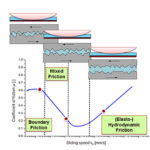
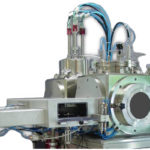

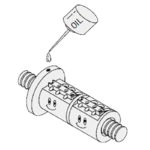
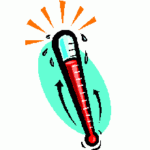

Leave a Reply
You must be logged in to post a comment.